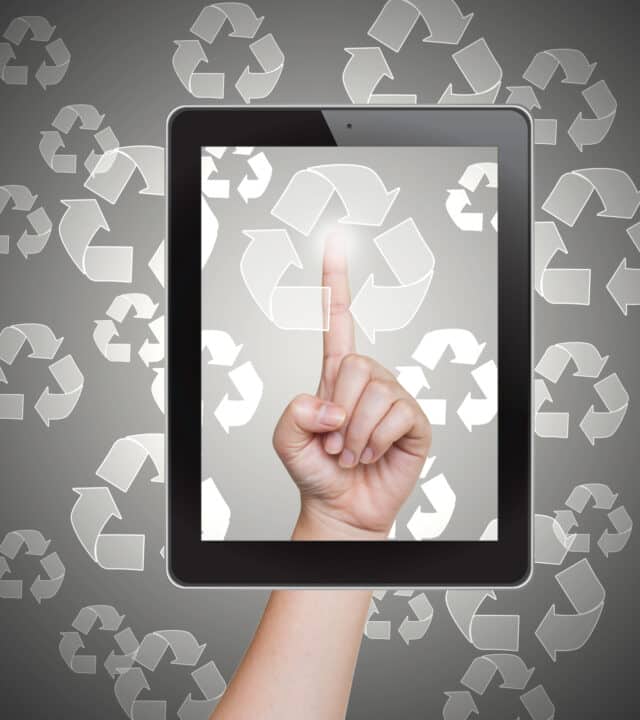How and why we need to break the stigma around second hand tech

Mountains of e-waste, increasingly scarce resources, and volatile supply chains; these are just three of the reasons that the technology industry should be re-considering its current model of 'take, make and replace'. We’ve seen across other industries, such as fashion, that the cost-of-living crisis and increasingly eco-conscious consumers have led to the second-hand market becoming a lucrative business.
Through holding onto stigmas around the quality and performance of second-hand tech, we continue to purchase brand new despite the negative impact this is having on our planet. So, what needs to be done to see similar change across the tech industry?
While historically refurbished devices have been perceived as lower quality, unreliable products -- the innovation within the industry has meant we now have processes that can produce products certified as high quality and equal performance to new. Couple this with retailers embracing the second-hand market such as Curry's, and the industry is in a strong position for the future. But in spite of such progress, stigmas still remain attached to second-life devices, especially at an enterprise level.
This is not only an extra cost to wallets but also to the environment, with 160,000 laptops disposed of every day in the EU alone. For every new laptop produced in replacement to an existing device, an average of 316kg of CO2 is created, 190,000 liters of water is used, and 1,200 kg of earth and rock is mined.
The misconceptions around second-hand tech
The important consideration with technology in comparison to other second-life products is that it must perform and function to a high-level, not just look like new. A good comparable to use is buying a second-hand car. We’re relaxed about buying a car as we can usually paint a full understanding of the vehicle’s history and have reliable repairs available, but why is buying second user technology any different? Perhaps the reason for the stigma around second-life technology is that it is seen as 'unregulated'. A large amount of the second-hand consumer tech market are smaller businesses, refurbishing and repairing devices from larger OEMs, where using the original producer might be seen as too expensive.
In addition, the automotive industry would be perceived as very well served when it comes to repair and maintenance. Not only are there legal requirements to get a car on the road, ensuring that the car you are buying is road worthy and safe, but there is no shortage of garages and mechanics to take your car to when something goes wrong.
By taking these same principles from the automotive industry and applying them to the second-hand technology market, we can start to see where trust can be built and where we can break down previous misconceptions. Certification of quality, such as the BSI Kitemark, and a service-built industry where products can be put back through the circular economy and maintain performance without creating e-waste or adding to cost, are two of the key solutions. In doing so, businesses can start to harness real cost saving in comparison to new, reduce the emissions they produce and ultimately, maintain the quality of technology they have.
How to break the stigma and why remanufacturing is key
So how do you start shifting the dial and increase the desire to consider purchasing second-life tech? It's up to both public and private sectors to work as one to help create a circular economy that embraces second-hand. As shown above, regulation and confidence in a purchase is key. While refurbishing has made great strides to open the second-hand market up to a wider range of potential users, there’s little in the way of a guarantee on the performance of the product you’ll receive. That’s where remanufacturing comes in, and how organizations and businesses alike can take advantage of purchasing at scale.
The BSI Kitemark awarded to remanufacturing is the guarantee that end-users need to put their trust in the product, with a certification that it will perform as good, if not better, than new. With that trust in place, and a guarantee on the performance of the product over a full second-lifecycle, the stigmas surrounding second-life technology will start to break down. In our view, the growth of remanufacturing is the only way to save the technology industry from going too far in damaging the planet by mining natural resources and creating an insurmountable mountain of e-waste.
Like with many things this will rely on a few 'pioneers' being early adopters, yet this time it comes with little risk and plenty of reward. Even beyond the obvious cost saving and environmental benefits, it can help improve public perception or even perhaps attract new talent to join businesses. In fact, one-fifth of UK workers report that they would actually turn down jobs based on a company’s poor ESG commitments. So next time your company looks to conduct an IT refresh, considering remanufacturing as an option is the first step to creating real sustainable change in the technology industry.
Image credit: jumpe/depositphotos.com
Steve Haskew is Head of Sustainability and Social Leadership at Circular Computing.
